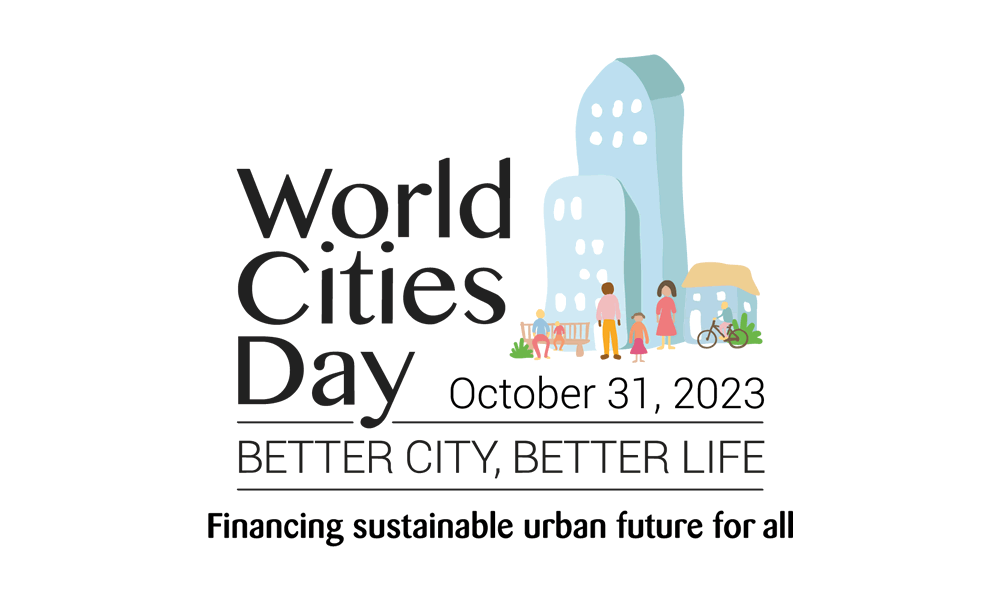« June 2019 | Main | August 2019 »
July 31, 2019
QS Best Student Cities Ranking 2019: London Named World's Best Student City. Bangalore Best Student City in India.
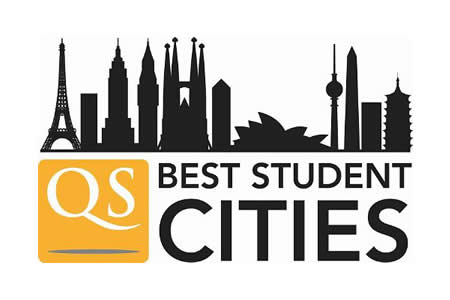
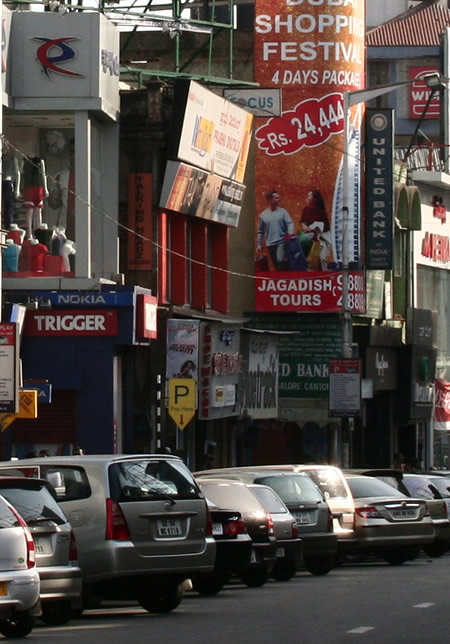
Photo: Bangalore. Bangalore is QS Best Student City in India. Image Credit: M. R. Gears.
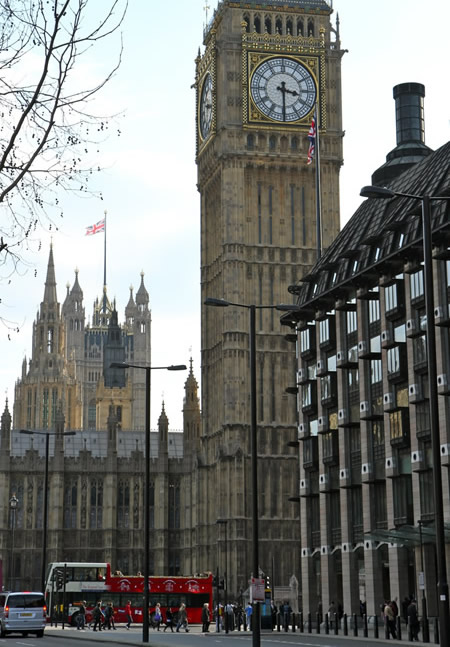
Photo: London. Big Ben, and Westminster Abbey. London is the World’s Best Student City. Image Credit: Duane Wessels.
LONDON, July 31, 2019 — London is the world’s best student city for the second consecutive year, according to the latest guide to the globe’s top urban study destinations. The sixth edition of the QS Best Student Cities Ranking, compiled by global consultancy QS Quacquarelli Symonds, sees London outrank competition from Tokyo and Melbourne.
London remains the world’s leading student city due to the high number of top universities present in the city, its high levels of employer activity and student diversity. Further, the global student body holds it in high regard. These positive elements outweigh London’s low ‘Affordability’ score.
QS ranks Student Cities according to:
- Number and performance of their Universities.
- The extent to which employers are actively hiring there.
- City’s affordability.
- City’s Desirability and Quality of Life.
- Diversity of the city’s student body.
Feedback from over 87,000 current and prospective international students also impacts the results.
- Both the US and UK have 14 cities ranked, led by Boston (12th) and London (1st) respectively.
- Canada’s top City is Montreal (6th) and second-best according to the students surveyed;
- Toronto (11th) ranks third for Desirability;
- Asia’s top city remains Tokyo (2nd) followed by Seoul (10th) and Hong Kong (14th);
- China’s top is Beijing (32nd), with Shanghai (33rd):
- India’s top is Bangalore (81st), with Mumbai (85th);
- Australia boasts seven cities, with Melbourne (3rd) and Sydney (9th) confirming their top-10 rank;
- Auckland (37th) is New Zealand’s top city;
- In Continental Europe, Munich (4th) leads, followed by Berlin (5th), Paris (7th) and Zurich (8th);
- Scandinavia’s best is Stockholm (37th);
- Moscow (34th) leads in Eastern Europe, followed by Prague (35th);
- Budapest (43rd) tops the Affordability Indicator, followed by Kuala Lumpur;
- Latin America’s best City is Buenos Aires once again (31st ).
- Dubai-Ajman-Sharjah (60th) tops the Middle East;
- Africa’s top is Johannesburg (78th ), with Cape Town (80th);
- Pakistan’s leading city is Islamabad (110th), with Lahore (115th).
QS Best Student Cities
Rank — City — Country
- London — United Kingdom
- Tokyo — Japan
- Melbourne — Australia
- Munich — Germany
- Berlin — Germany
- Montreal — Canada
- Paris — France
- Zurich — Switzerland
- Sydney — Australia
- Seoul — South Korea
- Toronto — Canada
- Boston — United States
- Vienna — Austria
- Hong Kong — Hong Kong
- Edinburgh — United Kingdom
- Vancouver — Canada
- Taipei — Taiwan
- Kyoto-Osaka-Kobe — Japan
- New York — United States
- Singapore — Singapore
- Barcelona — Spain
- Brisbane — Australia
- Canberra — Australia
- Amsterdam — Netherlands
- Los Angeles — United States
- Adelaide — Australia
- Auckland — New Zealand
- Kuala Lumpur — Malaysia
- Manchester — United Kingdom
- Buenos Aires — Argentina
- Beijing — China
- Shanghai — China
- Moscow — Russia
- Prague — Czech Republic
- San Francisco — United States
- Dublin — Ireland
- Stockholm — Sweden
- Glasgow — United Kingdom
- Milan — Italy
- Chicago — United States
- Perth — Australia
- Brussels — Belgium
- Budapest — Hungary
- Ottawa — Canada
- Copenhagen — Denmark
- Coventry — United Kingdom
- Nottingham — United Kingdom
- Birmingham — United Kingdom
- Lyon — France
- Warsaw — Poland
- Lisbon — Portugal
- Mexico City — Mexico
- Santiago — Chile
- Gothenburg — Sweden
- Helsinki — Finland
- Atlanta — United States
- Newcastle Upon Tyne — United Kingdom
- Bangkok — Thailand
- Brno — Czech Republic
- Dubai-Sharjah-Ajman — United Arab Emirates
- Philadelphia — United States
- Washington DC — United States
- Aberdeen — United Kingdom
- Christchurch — New Zealand
- St. Petersburg — Russia
- Pittsburgh — United States
- Hsinchu — Taiwan
- Stuttgart — Germany
- Rome — Italy
- Istanbul — Turkey
- Athens — Greece
- Tomsk — Russia
- Toulouse — France
- Valencia — Spain
- San Diego — United States
- Sao Paulo — Brazil
- Johannesburg — South Africa
- Graz — Austria
- Cape Town — South Africa
- Bangalore — India
- Bogota — Colombia
- Brighton — United Kingdom
- Gold Coast — Australia
- Manila — Philippines
- Mumbai — India
- Baltimore — United States
- Abu Dhabi — United Arab Emirates
- Ankara — Turkey
- Daejeon — South Korea
- Monterrey — Mexico
- Novosibirsk — Russia
- Houston — United States
- Miami — United States
- Nagoya — Japan
- Vilnius — Lithuania
- Bristol — United Kingdom
- Lima — Peru
- Nanjing — China
- Montpellier — France
- Beirut — Lebanon
- Rio de Janeiro — Brazil
- Sheffield — United Kingdom
- Krakow — Poland
- Wuhan — China
- Liverpool — United Kingdom
- Cairo — Egypt
- Wroclaw — Poland
- Jakarta — Indonesia
- Riga — Latvia
- Islamabad — Pakistan
- Almaty — Kazakhstan
- Delhi — India
- Dallas — United States
- Chennai — India
- Lahore — Pakistan
- Quebec — Canada
- Kiev — Ukraine
- Leicester — United Kingdom
- Minsk — Belarus
The Mayor of London, Sadiq Khan, said: “The fact that London has again been ranked the best city in the world in which to be a student is fantastic news. It is no surprise given that London is home to world-leading higher education institutions and a vibrant cultural life. London is open to students and talent from around the world.”
Debuting at 81st position globally, Bangalore has been ranked India’s best city for students. In terms of affordability, Bengaluru is ranked seventh globally.
The other top Indian cities include Mumbai (85), Delhi (113), and Chennai (115). Among these, Mumbai has gained ground, moving 14 places up from last year.
Source: QS Quacquarelli Symonds
|GlobalGiants.Com|







Edited & Posted by the Editor | 3:01 AM | View the original post
July 29, 2019
Porsche India welcomes the new Macan, while Porsche introduces new 911 Carrera Coupé and 911 Carrera Cabriolet.
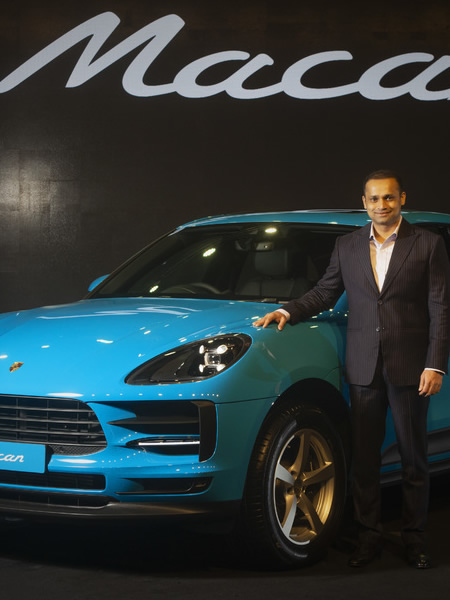
Photo: Pavan Shetty, Director of Porsche India, at the launch of the new Macan.
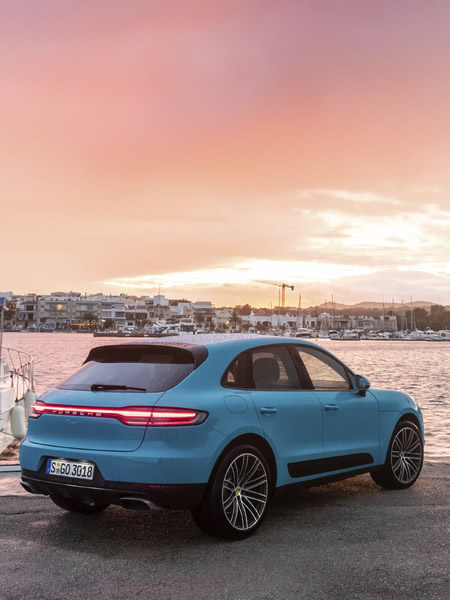
Photo: Porsche’s compact SUV the Macan is now available in India.
New Delhi, 29 July 2019 — Following a comprehensive upgrade, one of Porsche’s most popular models, the Macan, is now available in India. Its performance credentials underline the model’s position as the genuine sports car in its segment. The guests saw the latest generation at a launch event today. The brand’s compact SUV has evolved in terms of comfort and driving dynamics, with two engine versions available at the launch, the Macan and the more powerful Macan S.
Commenting on the arrival of the new model, Pavan Shetty, Director, Porsche India, said: “The Macan has been one of our most successful series in India. With the new generation combining even more pronounced Porsche DNA, greater performance and comfort, I am confident that the success story is sure to continue.”
“I believe that the Macan is the most exciting compact SUV on the market, never allowing you to forget it is a true sports car at heart. The new range offers the perfect balance of emotions and functionality. The newly introduced Crest Care Package for the Macan offers complete peace of mind for the vehicle’s upkeep. I am delighted to be welcoming the first variants of Macan to the market,” Mr. Shetty stated.
• Porsche introduces new 911 Carrera Coupé and 911 Carrera Cabriolet.
Meanwhile, Porsche is expanding its eighth-generation range with the addition of the 911 Carrera. It is launching a new 911 Carrera Coupé and a further 911 Carrera Cabriolet.



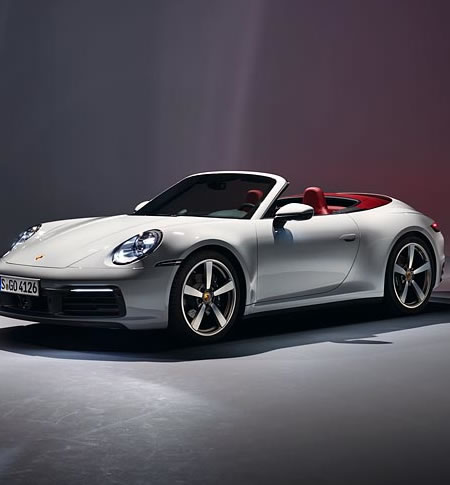



The latest Porsche 911 Carrera Coupé and 911 Carrera Cabriolet are now available for order.
|GlobalGiants.Com|







Edited & Posted by the Editor | 3:09 PM | View the original post
July 28, 2019
Mastercard: China and the United States Continue to Drive Global Travel

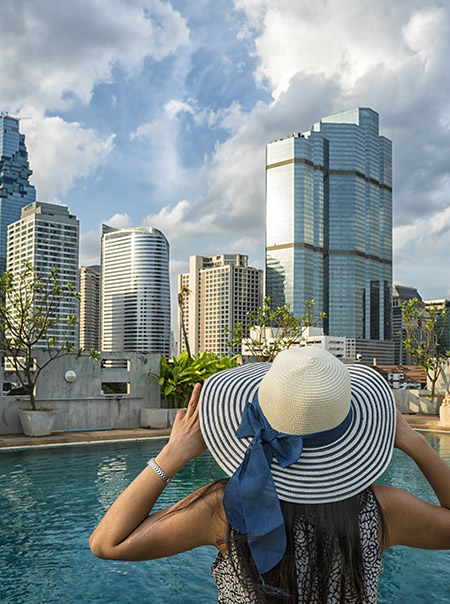
Photo: Bangkok, Thailand. Image Credit: Roberto Trombetta.
PURCHASE, NY - July 26, 2019 - According to Mastercard’s newest edition of its Global Destination Cities Index, Mainland Chinese are traveling overseas for business and leisure in higher numbers than ever before. Mastercard’s special report, “Global Destination Cities Index: Origins,” released today, turns its lens on where international travelers originate. Mainland China has jumped from No. 7 in 2009 to No. 2 today, behind only the United States in terms of the number of travelers to overseas destinations.
Mastercard’s “Global Destination Cities Index: Origins” individually ranks from where most people travel internationally and their top destinations. According to the World Travel & Tourism Council, the industry contributed a record US$8.8 trillion and 319 million jobs in 2018 globally.
This year, the United States is the No. 1 origin market followed by mainland China, Germany, the United Kingdom, and France. Travel from across Asia-Pacific also surged; the Republic of Korea and Taiwan, which were not in the top 10 a decade ago, rose to No. 6 and No. 10 respectively. The top origin markets are:
- United States of America
- Mainland China
- Germany
- The United Kingdom
- France
- Republic of Korea
- Japan
- Canada
- Russian Federation
- Taiwan
Top Destination Cities by Origin
RANK. ORIGIN COUNTRY — DESTINATION CITY 1; DESTINATION CITY 2; DESTINATION CITY 3
- The United States of America — Cancun, Mexico; Toronto, Canada; London, U.K.
- Mainland China — Bangkok, Thailand; Seoul, Republic of Korea; Tokyo, Japan
- Germany — Palma de Mallorca, Spain; Bolzano, Italy; Tiroler Unterland, Austria
- The United Kingdom — Palma de Mallorca, Spain; Paris, France; Dublin, Ireland
- France — London, England; Marrakech, Morocco; Barcelona, Spain
- Republic of Korea — Osaka, Japan; Hokkaido, Japan; Tokyo, Japan
- Japan — Taipei, Taiwan; Seoul, Republic of Korea; Bangkok, Thailand
- Canada — Washington D.C., U.S.A.; Las Vegas, U.S.A.; New York, U.S.A.
- Russian Federation — Antalya, Turkey; Pattaya, Thailand; Phuket, Thailand
- Taiwan — Tokyo, Japan; Hokkaido, Japan; Okinawa, Japan
Top Destination Countries by Origin
RANK. ORIGIN COUNTRY — DESTINATION COUNTRY 1; DESTINATION COUNTRY 2; DESTINATION COUNTRY 3
- United States of America — Mexico; Canada; Italy
- Mainland China — Thailand; Japan; United States of America
- Germany — Italy; Spain; Austria
- United Kingdom — Spain; United States of America; India
- France — Spain; United States of America; United Kingdom
- Republic of Korea — Japan; Mainland China; Vietnam
- Japan — The United States of America; Mainland China; Taiwan
- Canada — United States of America; Mexico; India
- Russian Federation — Turkey; Thailand; Tunisia
- Taiwan — Japan; Republic of Korea; Thailand
“Mastercard’s “Global Destination Cities Index: Origins” offers a new way for local officials and companies to see how travelers spend at destinations. It provides them with better insights on how to plan and promote travel and tourism capabilities,” says Diana Robino, senior vice president, tourism partnerships for Mastercard.
“Managed well, travel and tourism can be a catalyst for inclusive growth, benefiting both visitors and all communities in the destinations. Mastercard is committed to using its expertise and technology to help cities and destinations realize these opportunities,” she said.
Mastercard acts as a critical technology partner for the global travel and tourism industry. It helps tourism partners better understand commerce patterns and deliver more connected and inclusive experiences.
Addressing the challenges of global tourism is too big a task for one organization, industry, or government alone. Bringing together resources from across disciplines and sectors - public and private - produces innovation and more sustainable solutions, made possible by a 360-degree view of the issues at hand.
Mastercard’s “Origins” is a breakout report of the broader “Global Destination Cities Index,” with full rankings coming out later this year.
“Top Destinations for Origins” is obtained by summing together all the overnight visits of origin market residents to each destination covered by the overall Mastercard Global Destination Cities Index.
The Mastercard “Global Destination Cities Index” ranks 200 cities based on third-party research and proprietary analysis. It takes into account the number of total international overnight visitor arrivals and the cross-border spending by these same visitors in the destination cities in 2018.

Source: Mastercard
|GlobalGiants.Com|







Edited & Posted by the Editor | 12:32 PM | View the original post
July 24, 2019
India's Commerce & Industry Minister Launches Global Innovation Index Rankings 2019, authored by Cornell University, INSEAD, and WIPO.
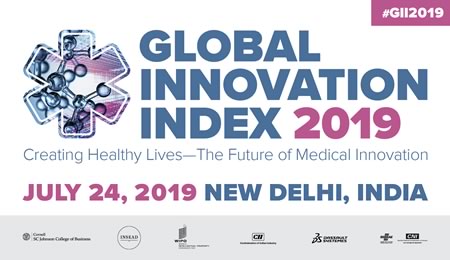
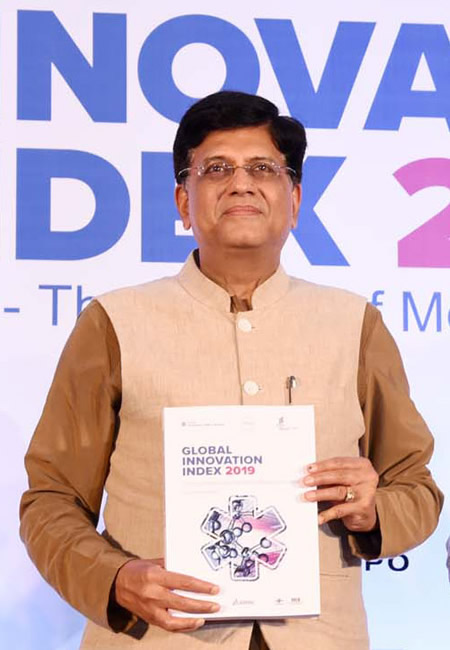
Photo: The Union Minister for Railways and Commerce & Industry, Piyush Goyal, launching the Global Innovation Index - 2019, in New Delhi on 24 July 2019.


New Delhi, 24 July 2019 — Union Minister of Commerce & Industry and Railways, Piyush Goyal, launched the Global Innovation Index (GII) 2019 in New Delhi, today.
India jumped five places to improve its position from 57th last year to 52nd in 2019.
The Minister, Piyush Goyal, congratulated all those involved in the process. He said that India has made significant progress to 52nd rank in the GII-2019 and now the culture of innovation is coming to the center-stage. Mr. Goyal further said that India would not rest on past laurels until it achieves its target of positioning itself among the top 25 countries of the Global Innovation Index. To achieve this ranking, he urged all stakeholders to work in mission mode.
Piyush Goyal urged the R&D institutions, universities, and the private sector to transform the country into a hub of innovation.
The Commerce and Industry Minister in his address said that the improvement in the rankings should inspire Indians to help marginalized and underprivileged section of society. He said India needs innovative solutions to problems like rising pollution levels in cities, water crises, depleting natural resources, climate change, and food wastage.
“The rise in the GII by economic powerhouses like China and India have transformed the geography of innovation,” said WIPO Director General Francis Gurry.
Mr. Gurry thanked the Government of India for hosting the global launch of the GII. “India’s high-level focus on using innovation to foster economic development makes the country an ideal location for the GII 2019 launch,” Mr. Gurry said.
• The GII rankings are published every year by Cornell University, INSEAD and the World Intellectual Property Organization (WIPO).
The GII rankings of 129 economies use 80 indicators ranging from intellectual property filing rates to mobile-application creation, education spending, and scientific and technical publications.
Switzerland remains number one in the GII index. Sweden follows it. The United States of America, the Netherlands, the United Kingdom, Finland, Denmark, Singapore, Germany, and Israel come after that.
Top 20 in Global Ranking
- Switzerland
- Sweden
- United States of America
- The Netherlands
- The United Kingdom
- Finland
- Denmark
- Singapore
- Germany
- Israel
- Korea, Republic of
- Ireland
- Hong Kong (China)
- China
- Japan
- France
- Canada
- Luxemburg
- Norway
- Iceland
Sources: India Ministry of Commerce & Industry, World Intellectual Property Organization (WIPO), Cornell University.
|GlobalGiants.Com|
Launched today: Global Innovation Index 2019 ðŸŒðŸ’¡ðŸ“ˆ https://t.co/U1WxcDkRCS #GII2019
— World Intellectual Property Organization (WIPO) (@WIPO) July 24, 2019
The world’s innovation leaders:
1. Switzerland 🇨ðŸ‡
2. Sweden 🇸🇪
3. U.S. 🇺🇸
4. Netherlands 🇳🇱
5. U.K. 🇬🇧
6. Finland 🇫🇮
7. Denmark 🇩🇰
8. Singapore 🇸🇬
9. Germany 🇩🇪
10. Israel 🇮🇱 pic.twitter.com/Hk0fjvG9Mg
Modi Govt's thrust on Research and Development making India a Hub of Innovationhttps://t.co/JzZe9bOaO6
— Dr Ramesh Pokhriyal Nishank (@DrRPNishank) July 26, 2019
via NaMo App pic.twitter.com/gScdy0V4sz







Edited & Posted by the Editor | 1:39 PM | View the original post
July 22, 2019
India's Second Mission to the Moon: GSLV MkIII-M1 Successfully Launches Chandrayaan-2 Spacecraft.

Photo: The Geosynchronous Satellite Launch Vehicle, GSLV MkIII-M1 rocket, carrying Chandrayaan-2 spacecraft, lifting off from the Second Launch Pad at the Satish Dhawan Space Centre, Sriharikota in Andhra Pradesh on Monday, 22 July 2019.
New Delhi, 22 July 2019 — India’s Geosynchronous Satellite Launch Vehicle GSLV MkIII-M1, successfully launched the 3840 kg Chandrayaan-2 spacecraft into an earth orbit today. The probe is now revolving around the earth with a perigee (nearest point to earth) of 169.7 km and an apogee (farthest point to earth) of 45,475 km. Today’s flight marks the first operational flight of the GSLV Mk III.
After a smooth countdown lasting 20 hours, GSLV MkIII-M1 vehicle majestically lifted off from the Second Launch Pad at the Satish Dhawan Space Centre SHAR (SDSC SHAR), Sriharikota in Andhra Pradesh at the scheduled launch time of 1443 Hrs (2:43 pm) Indian Standard Time (IST) with the ignition of its two S200 reliable strap-on motors. All the subsequent flight events occurred as scheduled.
About 16 minutes 14 seconds after lift-off, the vehicle-injected Chandrayaan-2 spacecraft into an elliptical earth orbit. Immediately after spacecraft separation from the vehicle, the solar array of the probe automatically got deployed. After that, ISRO Telemetry, Tracking and Command Network (ISTRAC), Bengaluru successfully took control of the spacecraft.
ISRO Chairman Dr. K Sivan congratulated the launch vehicle and satellite teams involved in this challenging mission. “Today is a historic day for Space Science and Technology in India. I am thrilled to announce that GSLV MkIII-M1 successfully injected Chandrayaan-2 into an orbit of 6000 Km more than the intended orbit and is better.”
“Today is the beginning of the historical journey of India towards Moon and to land at a place near the South Pole to carry out scientific experiments to explore the unexplored,” Dr. Sivan said.
In the coming days, a series of orbit maneuvers will be carried out using Chandrayaan-2’s onboard propulsion system. It will raise the spacecraft orbit in steps and then place it in the Lunar Transfer Trajectory to enable the spacecraft to travel to the vicinity of the moon.
GSLV Mk III is a three-stage launch vehicle developed by ISRO. The car has two solid strap-ons, a core liquid booster, and a cryogenic upper stage. It is designed to carry 4 ton class of satellites into Geosynchronous Transfer Orbit (GTO) or about 10 tons to Low Earth Orbit (LEO).
Chandrayaan-2 is India’s second mission to the moon. It comprises a fully indigenous Orbiter, Lander (Vikram) and Rover (Pragyan).
The mission objective of Chandrayaan-2 is to develop and demonstrate the critical technologies for end-to-end lunar mission capability, including soft-landing and roving on the lunar surface. On the science front, this mission aims to expand our knowledge about the moon further. There would be a detailed study of its topography, mineralogy, surface chemical composition, thermo-physical characteristics, and atmosphere leading to a better understanding of the origin and evolution of the moon.
After leaving earth orbit and on entering the moon’s sphere of influence, the onboard propulsion system of Chandrayaan-2 will be fired to slow down the spacecraft.
Subsequently, the lander will separate from the Orbiter and enter into a 100 km X 30 km orbit around the moon. Then, it will perform a series of complex braking manoeuvers to soft-land in the South polar region of the moon on 7 September 2019.
Following this, the Rover will roll out from the lander and carry out experiments on the lunar surface for one lunar day, which is equal to 14 Earth days. The mission life of the lander is also one lunar day. The Orbiter will continue its mission for one year.
The Orbiter had a lift-off weight of about 2,369 kg, while the lander and Rover weighed 1,477 kg and 26 kg respectively. The Rover can travel up to 500 m (half a kilometer) and relies on electric power generated by its solar panel for functioning.
Chandrayaan-2 has several science payloads to facilitate a more detailed understanding of the origin and evolution of the moon. The Orbiter carries eight payloads, the lander takes three, and the Rover brings two. The Orbiter payloads will conduct remote-sensing observations from a 100 km orbit while the Lander and Rover payloads will perform in-situ measurements near the landing site.
The ground facilities constitute the third vital element of Chandrayaan-2 mission. They perform the crucial task of receiving the health information as well as the scientific data from the spacecraft. They also transmit the radio commands to the satellite. The Ground Segment of Chandrayaan-2 consists of Indian Deep Space Network, Spacecraft Control Centre and Indian Space Science Data Centre.
Today’s successful launch of Chandrayaan-2 is a significant milestone in this challenging mission. A total number of 7500 visitors witnessed the launch live from the Viewer’s Gallery at Sriharikota.
Source: Department of Space, Government of India.
|GlobalGiants.Com|







Edited & Posted by the Editor | 2:34 PM | View the original post
July 19, 2019
High-Level Political Forum at UN Headquarters in New York concludes that Education is Everyone's Responsibility.
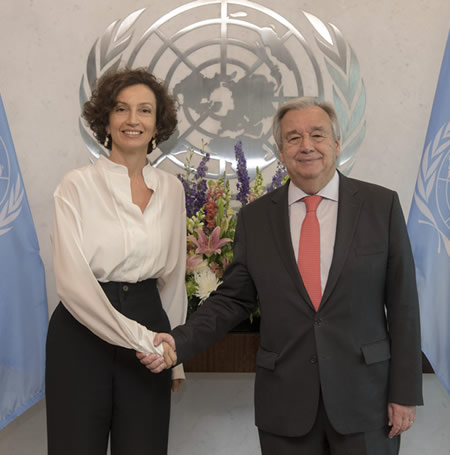
Photo: UN Secretary-General, António Guterres (right), meets with Audrey Azoulay, Director-General of the United Nations Educational, Scientific and Cultural Organization (UNESCO). 16 July 2019. United Nations, New York. UN Photo/Mark Garten.
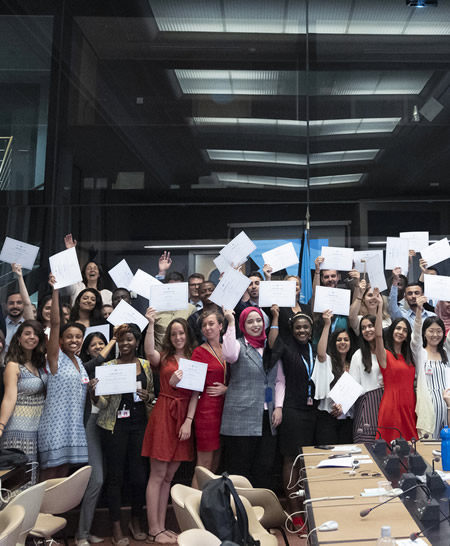
Photo: Group photo of participants of the 57th UN Geneva International Graduate Study Programme during the closing ceremony. The participants are displaying the certificates awarded to them. 12 July 2019. United Nations, Geneva. UN Photo/ Jean-Marc Ferré.
New York, 19 July 2019 — The voices of governments, donors, international organizations, youth, and teachers struck a universal chord in calling for stepped-up action to achieve relevant, equitable and inclusive quality education. They were participating in an event organized by UNESCO, the Group of Friends for Education and the SDG-Education 2030 Steering Committee during the High-Level Political Forum at UN Headquarters in New York.
“Education is a fundamental right and the supporting structure for the entire 2030 Agenda,” said UNESCO Director-General Audrey Azoulay, opening the event. “It is urgent that we act together and step up efforts to invest more in education.” “Governments hold the primary responsibility, but civil society, multilateral and international actors must join their efforts to achieve this common goal,” she said. Ms. Azoulay asserted that UNESCO would continue to make education a top priority to accomplish its global coordination and monitoring role.
Government representatives gave examples of how Sustainable Development Goal 4 on education is influencing national policy, demonstrating its relevance to all contexts. The Minister of Research and Higher Education of Norway, Ms. Iselin Nybo, proposed actions to integrate sustainable development across all school subjects and university programs. To achieve the SDGs and build better societies, she called for the “democratization of knowledge” to ensure that the fruits of research are widely shared.
Argentina has placed a priority on ‘leaving no one behind” through affirmative actions at all levels, explained Oscar Ghillione, the country’s deputy Minister of Education. Having hosted the first G20 conference of education ministers in 2018, Argentina is also striving to “place education at the heart of the global debate,” he said.
Jaime Saavedra, head of Education Global Practice at the World Bank, called for a “completely different level of political commitment.” He warned that “many kids are in learning poverty” as proven by assessments showing that over half cannot understand a simple story. “This is morally unacceptable,” he said.
UNESCO Assistant Director-General for Education, Stefania Giannini, wrapped up the event by stressing urgency, accountability, solidarity, and political engagement to accelerate global action for education.
|GlobalGiants.Com|







Edited & Posted by the Editor | 1:12 PM | View the original post
July 18, 2019
Mastercard's Global Network, City Possible, demonstrates how Cities can truly become Smart Cities.



Photo: Dubai. Image Credit: Eugene Kaspersky. Dubai is a founding member of the City Possible global network.

Photo: Athens, Greece. Image Credit: Tilemachos Tampakas. Athens is a founding member of the City Possible global network.
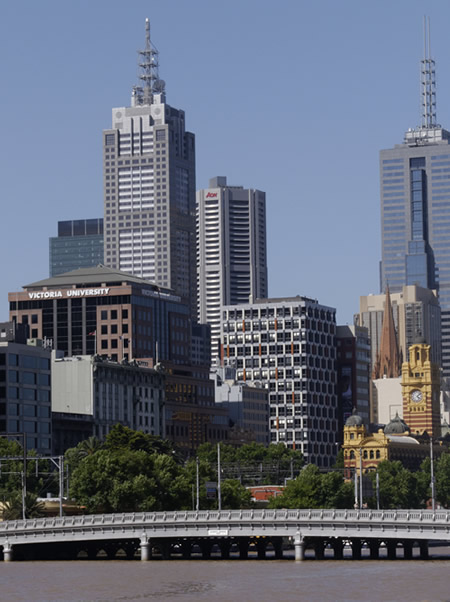
Photo: Melbourne, Australia. Image Credit: Carlos Y. Melbourne is a founding member of the City Possible global network.
At the just-concluded United States Conference of Mayors in Honolulu, Hawaii, Mastercard demonstrated how collaboration and technology could help the city administrations and the city residents.
Mastercard recently launched “City Possible,” a unique global network for urban co-development. Mastercard is connecting cities with academia and businesses to identify common challenges.
Sixteen cities, representing a diverse mix of geography and size, became founding members of the global City Possible network: Athens, Aurora IL, Baltimore, Dubai, Dublin, Helsinki, Honolulu, Kansas City, Melbourne, Prague, San Diego, Altamonte Springs FL, and Greater Sydney communities of Campbelltown, Canterbury Bankstown, Liverpool, and Wollondilly. The network is open for additional cities to join.
Miguel Gamiño leads the global city partnerships for Mastercard. According to him, “The superpower of cities is their freedom to collaborate - allowing them to build on each other’s progress.” “By bringing together city leaders from across the globe, City Possible promotes the sharing of ideas and best practices - aimed at advancing more connected and inclusive urban communities. What unites all our public, private, and academic partners is their commitment to making technology work for all people, and finding scalable solutions for universal needs.”
As a critical component of City Possible, Mastercard is partnering with the Technology and Entrepreneurship Center at Harvard University (TECH). TECH will host a series of programs to foster a regular learning exchange among global city leaders.
“As urban areas around the world continue to grow, cities face common issues - how to provide a healthy environment, safety, affordability and economic opportunity for their communities,” says Prof. David S. Ricketts, a fellow at TECH. “Faced with limited resources and competing priorities, city leaders look for solutions that work. Through our learning exchanges, we want to equip CIOs and other urban leaders to navigate this dynamic environment better.”
The United Nations’ Sustainable Development Goals (SDGs) call for “making cities inclusive, safe, resilient, and sustainable.” Through collaboration with Mastercard, participating cities can access the City Possible network to identify shared challenges and seek sustainable business models to address them. United Nations Global Compact Cities Programme will work with City Possible. “We are thrilled at the opportunity to work with Mastercard,” Michael Nolan, Director of the UN Global Compact Cities said.
French multinational company IDEMIA is also collaborating with Mastercard for City Possible. IDEMIA specializes in security and identity solutions. “We look forward to building on our long-standing relationship with Mastercard,” said Nathalie Oestmann, SVP Global Innovation Strategy for Financial Institution’s activities at IDEMIA. “It would shape future banking and payment experiences in an increasingly urbanized world.”
According to Mastercard, City Possible will provide a framework for co-creating, testing, and finding solutions to crucial challenges shared by cities across the globe. Mastercard would connect cities with private sector players that are equally committed to people-centered design. By closely collaborating with companies such as Microsoft, HERE Technologies and now also IDEMIA, Mastercard works to address urban challenges more holistically.
Mastercard explains that one of the areas that exemplifies the advantages of city-to-city collaboration is public transit. Mastercard had helped Transport for London to transform its ticketing system by introducing contactless technology in 2014. Now cities around the world, including Sydney, Singapore, Vancouver, Boston, and New York have adopted solutions that are using the same global standard. Through City Possible, cities could benefit from greater efficiency, and better, more inclusive experiences in the disbursement of social benefits and unified access to municipal services, Mastercard elaborated.
Younus Al Nasser, Assistant Director-General, Smart Dubai & CEO, Dubai Data Establishment, said that Knowledge and experience sharing build Smart Cities. Joining Mastercard’s City Possible network opens a global array of uses for Dubai. “We have already begun working on our first collaborative project with Mastercard. Through the network, we look forward to working on several cross-border projects with cities across the globe,” he stated.
The Mayor of Kansas City, Sly James, said, “Kansas City is proud to partner with Mastercard and Civic Leaders from around the world.” “Smart Cities programs are not about technology - they are about people, and how we can use technology as a tool to improve the quality of life for our residents and visitors.” “We are excited to be part of the global network of City Possible that is using tech and policy to establish 21st Century Communities for 21st Century Citizens.”
“Athens has acquired deep expertise in public-private partnerships, and we are extremely excited to join the City Possible program,” said Georgios Kaminis, Mayor of Athens, Greece. “Mastercard is a key partner, and we are already working closely to enhance the city’s tourism and technology sector.” “By joining this global initiative, we continue to work towards developing smart city solutions. Sharing best practices and knowledge with other cities is the best way of moving forward,” he concluded.
Source: Mastercard
|GlobalGiants.Com|
Focused on advancing #InclusiveUrbanization through our technology, data insights and partnerships, @Mastercard is proud to support mayors in improving people’s quality of life as a host city sponsor of the 87th @usmayors @HonoluluGov #CityPossible #mayors2019 pic.twitter.com/9mcFPTvYkK
— City Possible (@CityPossible) June 25, 2019
Imagine all the possibilities that Mastercard City Key could unlock for mayors and their residents to enable better access to everything their cities have to offer #InclusiveUrbanization #CityPossible #mayors2019 @maddie_callis @HonoluluGov pic.twitter.com/m6yybAXoYU
— City Possible (@CityPossible) July 16, 2019
"Using data insights, technology, and partnerships to build resilient cities." @maddie_callis @RohiniSengupta @CityPossible @WTWrisk discuss #ClimateMayorsSummit #mayors2019 @ClimateMayors @Honolulugov pic.twitter.com/ySAv6j2xhj
— Mastercard News (@MastercardNews) June 29, 2019







Edited & Posted by the Editor | 7:44 AM | View the original post
July 17, 2019
Times Higher Education (THE) announces its World University Reputation Rankings 2019. India Absent.
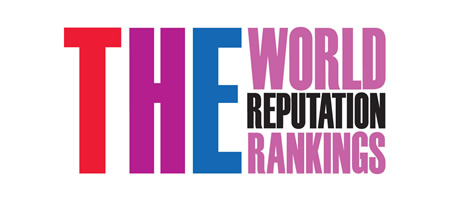
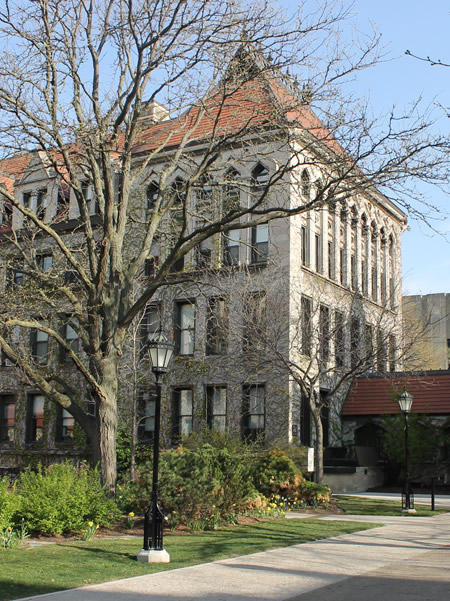
Photo: A building at the University of Chicago. Image Credit: Corey Seeman.
London, 17 July 2019 — The most valuable asset in a crowded market is reputation. Times Higher Education (THE) today announced the World University Reputation Rankings 2019 comprising the world’s top 100 most prestigious universities.
According to Times Higher Education, its World University Reputation Rankings are created using the world’s largest invitation-only academic opinion survey.
The Times Higher Education (THE) World University Reputation Rankings 2019 are based on the world’s largest invitation-only opinion survey of senior published academics. It asks scholars to name no more than 15 universities that they believe are the best for research and teaching in their field, based on their own experience.
The US continues to dominate the table in 2019, with 42 representatives in the overall top 100, led by Harvard University in first place for the ninth consecutive year.
The UK has ten institutions in the rankings, up from nine last year, headed by the University of Cambridge in fourth place.
Australia has doubled its representation this year, claiming six spots, up from three. Its most prestigious institution, the University of Melbourne, is now ranked joint 44th, up from joint 47th.
Meanwhile, Japan’s University of Tokyo sits just outside the top 10 in 11th place, up from 13th last year. It is the top-ranked university outside the US and UK.
Elsewhere, a Canadian university features in the top 20 for the first time since 2015; the University of Toronto is ranked 19th, up from joint 22nd last year.
Brazil’s University of Sao Paulo is back in the ranking in the 81-90 band; it was absent last year.
Overall, 19 countries are represented across the top 100 list of the most influential global university brands, down from 21 last year.
This year, no institution from India figures in the Times Higher Education World University Reputation Rankings. Last year, the Indian Institute of Science (IISc) Bangalore has made it to the list in the 91-100 band.
According to Times Higher Education, the 2019 rankings are based on a survey of 11,554 respondents in 135 countries, across all core academic disciplines, carried out in the spring of 2019.
• World’s Top 100 Most Prestigious Universities in 2019
RANK — INSTITUTION — COUNTRY
- Harvard University — United States
- Massachusetts Institute of Technology — United States
- Stanford University — United States
- University of Cambridge — United Kingdom
- University of Oxford — United Kingdom
- University of California, Berkeley — United States
- Princeton University — United States
- Yale University — United States
- University of California, Los Angeles — United States
- University of Chicago — United States
- The University of Tokyo — Japan
- California Institute of Technology — United States
- Columbia University — United States
- Tsinghua University — China
- University of Michigan-Ann Arbor — United States
- Johns Hopkins University — United States
- Peking University — China
- UCL — United Kingdom
- University of Toronto — Canada
- ETH Zurich — Switzerland
- University of Pennsylvania — United States
- Cornell University — United States
- Imperial College London — United Kingdom
- National University of Singapore — Singapore
- London School of Economics and Political Science — United Kingdom
- New York University — United States
- Kyoto University — Japan
- University of Washington-Seattle — United States
- Duke University — United States
- University of California, San Diego — United States
- Carnegie Mellon University — United States
- The University of Texas at Austin — United States
- Northwestern University — United States
- University of Edinburgh — United Kingdom
- The University of Illinois at Urbana-Champaign — United States
- University of Wisconsin-Madison — United States
- University of British Columbia — Canada
- Lomonosov Moscow State University — Russian Federation
- McGill University — Canada
- Paris Sciences et Lettres - PSL Research University Paris — France
- King’s College London — United Kingdom
- University of California, San Francisco — United States
- LMU Munich — Germany
- Georgia Institute of Technology — United States
- University of Hong Kong — Hong Kong
- University of Melbourne — Australia
- Seoul National University — South Korea
- University of California, Davis — United States
- École Polytechnique Fédérale de Lausanne — Switzerland
- The University of North Carolina at Chapel Hill — United States
51-60
- Delft University of Technology — Netherlands
- Heidelberg University — Germany
- KU Leuven — Belgium
- University of Manchester — United Kingdom
- University of Minnesota — United States
- Nanyang Technological University, Singapore — Singapore
- National Taiwan University — Taiwan
- Pennsylvania State University — United States
- Sorbonne University — France
- Technical University of Munich — Germany
61-70
- University of Amsterdam — Netherlands
- Humboldt University of Berlin — Germany
- Karolinska Institute — Sweden
- Leiden University — Netherlands
- University of Maryland, College Park — United States
- Michigan State University — United States
- Ohio State University — United States
- University of Southern California — United States
- University of Sydney — Australia
- Tohoku University — Japan
71-80
- Australian National University — Australia
- Brown University — United States
- University of Copenhagen — Denmark
- Fudan University — China
- Indiana University (Bloomington) — United States
- Korea Advanced Institute of Science and Technology (KAIST) — South Korea
- Osaka University — Japan
- Purdue University West Lafayette — United States
- University of Science and Technology of China — China
- Shanghai Jiao Tong University — China
- Washington University in St Louis — United States
81-90
- University of Arizona — United States
- Boston University — United States
- University of California, Santa Barbara — United States
- Free University of Berlin — Germany
- The Hong Kong University of Science and Technology — Hong Kong
- Rutgers University-New Brunswick — United States
- University of São Paulo — Brazil
- Sungkyunkwan University (SKKU) — South Korea
- Tokyo Institute of Technology — Japan
- Zhejiang University — China
91-100
- Chinese University of Hong Kong —Hong Kong
- Durham University — United Kingdom
- École Polytechnique — France
- University of Florida — United States
- Monash University — Australia
- University of Queensland — Australia
- UNSW Sydney — Australia
- Utrecht University — Netherlands
- Wageningen University & Research — Netherlands
- University of Warwick — United Kingdom
The Times Higher Education World University Reputation Rankings list the world’s top 100 universities purely on their Academic Prestige as distinct from their Academic Performance.
According to Times Higher Education rankings editor Phil Baty, “A university’s reputation for academic excellence is vital for its success.”
A university’s brand - crucial in helping to attract students, staff, and funding - is built on esteem.
Source: Times Higher Education
|GlobalGiants.Com|







Edited & Posted by the Editor | 10:25 AM | View the original post
July 15, 2019
2020 Presidential Candidate, Senator Amy Klobuchar, will deliver a vital speech and brief the press on priorities for her first 100 days as President at National Press Club, July 16.
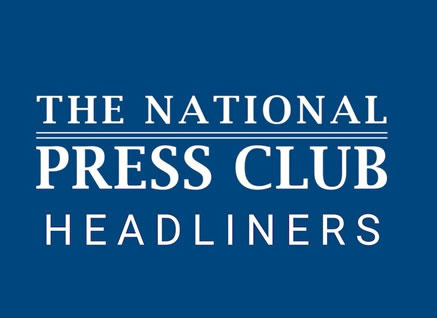
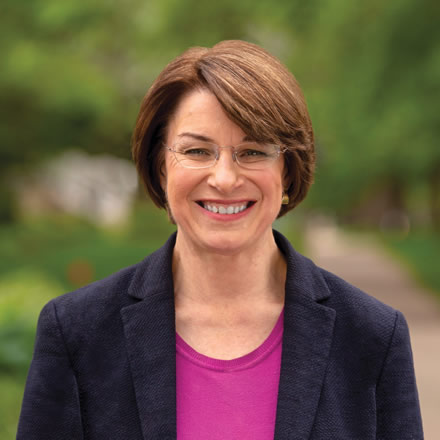
Photo: 2020 Presidential Candidate, Senator Amy Klobuchar, will deliver a vital speech and brief the press on priorities for her first 100 days as President at National Press Club, July 16.
WASHINGTON, July 15, 2019 — Democratic Presidential Candidate and Minnesota Senator, Amy Klobuchar, will participate in a National Press Club Newsmaker event at 10:30 a.m., Tuesday, July 16, 2019.
Senator Klobuchar will deliver a major speech on her plan outlining the more than 100 concrete steps she will take in her first 100 days as the President of the United States to take on the most significant challenges Americans face at home and abroad.
This news conference will take place in the Club’s Holeman Lounge, and is open to credentialed media and the Members of the National Press Club.
The National Press Club is located on the 13th Floor of the National Press Building at 529 14th St., NW, Washington, D.C.
Source: National Press Club, Washington, D.C.
|GlobalGiants.Com|







Edited & Posted by the Editor | 3:51 PM | View the original post
July 14, 2019
World's Best Cultural Cities for Students

Photo: College students, downtown, Sao Paulo, Brazil. Image Credit: Fernando Stankuns.

Photo: College students, downtown, Sao Paulo, Brazil. Image Credit: Fernando Stankuns.

Photo: Auto show, Santiago, Chile. Image Credit: Francisco Osorio.
LONDON, July 13, 2019 — The UK and US are home to the most cultural cities for students. A new study by Oxford Summer Courses examined the towns that are home to some of the world’s most prestigious colleges and ranked them according to the number of museums, cinemas, libraries, theaters and street markets per 100,000 people. The UK and US lead the list, with the American city of Berkeley in California coming out on top.
Second in the ranking was Ithaca, home to the Ivy League Cornell University. Ithaca, New York, is ranked high for its museums and theaters. Cambridge (UK) follows Ithaca. Cambridge (UK) is ranked highly across all categories, in particular, public libraries and theaters. The UK overall is well represented, with six cities - Cambridge, Edinburgh, Oxford, Glasgow, Bristol, and Manchester - featuring in the top 20.
The United States and the United Kingdom both ranked highly in the top 20, with eight and six cities featured, respectively.
Cambridge (3rd place) beat out old-time rival Oxford (8th place) in the ranking.
Continental European cities outside the UK also performed well, with Amsterdam, Paris, Lausanne, and Zurich making to the top 20.
The top 10 cities, according to the research, are:
- Berkeley, CA, USA
- Ithaca, NY, USA
- Cambridge, UK
- Cambridge, USA
- Amsterdam, Netherlands
- Edinburgh, UK
- Paris, France
- Oxford, UK
- Ann Arbor, MI, USA
- Lausanne, Switzerland
Paris’s inclusion on the list - in 7th place - is no surprise. It has some 300 museums and 132 theaters. Amsterdam and Edinburgh have been rated two spots above Paris for their collections of museums and bold cultural identities.
The results show that the UK has much to offer students from a cultural perspective. Historic cities such as Oxford and Cambridge not only rank highly in traditional cultural categories, such as theaters, museums, and libraries but also live music venues and street food markets.
Interestingly, despite their reputations as cultural beacons of the world, metropolises London and New York come in at relatively low 25th and 42nd positions, respectively. Although neither are short of cultural places to visit, their large populations mean that each scored relatively small on a per capita basis.
The cities selected for rating are home to Top Global Universities and lead in providing the following cultural facilities:
- Theaters
- Museums
- Cinemas
- Public Libraries
- Live Music Venues
- Street Markets
- Street Food Markets
The study concludes that the culture offered by a city forms an integral part of the student experience.
|GlobalGiants.Com|







Edited & Posted by the Editor | 3:04 PM | View the original post
July 13, 2019
TAG Heuer presents third Limited-edition MONACO Timepieces at Exclusive Event in New York City.
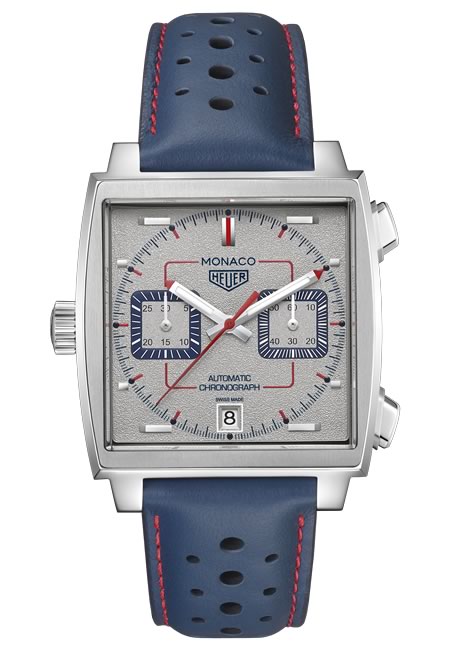


New York — TAG Heuer presented the third of five limited-edition MONACO timepieces to mark the icon’s 50th anniversary. TAG Heuer is dedicating the third limited edition to the 1990s, following the first timepiece (1970s edition) presented during the Monaco Formula 1 Grand Prix and the second timepiece (1980s edition) revealed in Le Mans. The exclusive unveiling event took place in New York. Guests included brand ambassadors 2017/2018, Formula E Champion Jean-Éric Vergne, actor Patrick Dempsey, and friend of the brand and model Paulina Vega.
|GlobalGiants.Com|







Edited & Posted by the Editor | 2:52 PM | View the original post
July 11, 2019
Nadia Nadim designated as UNESCO Champion for Girls' and Women's Education.

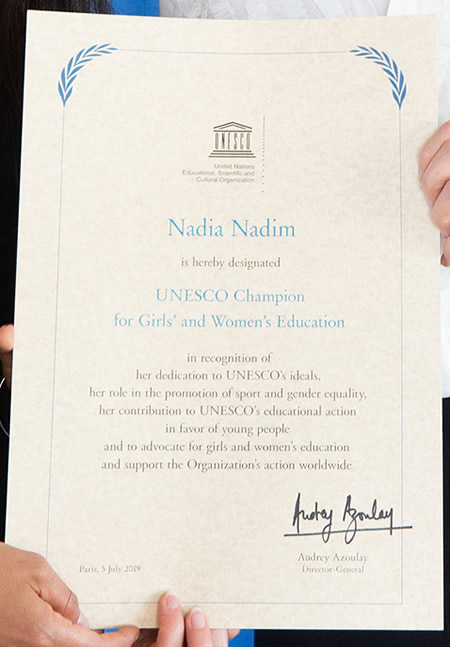
Photos: Nomination of Nadia Nadim as UNESCO Champion for Girls’ and Women’s Education. Images provided by & copyright © UNESCO / Christelle ALIX.
Paris, France, 12 July 2019 — UNESCO Director-General Audrey Azoulay on 5 July named Nadia Nadim, the Afghan-born Danish football striker for the French women’s Paris Saint-Germain team, UNESCO Champion for Girls’ and Women’s Education.
Ms. Azoulay designated Ms. Nadim in recognition of her role in promoting sport and gender equality, her contribution to UNESCO’s educational action in favor of young people, advocacy for girls and women’s education and support for the Organization’s work worldwide.
The designation took place as UNESCO launched a significant initiative, “Her Education, our Future” to mobilize political and financial support for girls and women’s education. UNESCO is working to improve the quality of data that education policymakers require to accelerate gender parity.
Ms. Nadim was born in Herat, Afghanistan. Following the execution of her father, an Afghan National Army (ANA) general in 2000, the family sought refuge in Denmark where Ms. Nadim began her career in football. In 2018, she published a book, My Story.
While pursuing her career in football, Ms. Nadim is a student of medicine at the University of Aarhus (Denmark).
The star football player shares UNESCO’s conviction that education can improve girls and women’s future. Ms. Nadim subscribes to UNESCO’s belief that knowledge can enhance their economic independence, self-confidence, and ability to assert their rights. Ms. Nadim’s award comes in recognition of her inspiring ability to serve as a role model, and her determination to put her heart and reputation at the service of girls and women everywhere.
As a UNESCO Champion for Girls’ and Women’s Education, Ms. Nadim joins UNESCO’s family of distinguished champions, committed to the Organization’s ideals and objectives, like the football players Edson Arantes Do Nascimento (Pelé) and Rabah Madjer.
|GlobalGiants.Com|







Edited & Posted by the Editor | 3:51 PM | View the original post
July 10, 2019
Map of UNESCO World Heritage Sites in India and UNESCO’s State of the Education Report for India 2019 presented to Vice President Naidu.
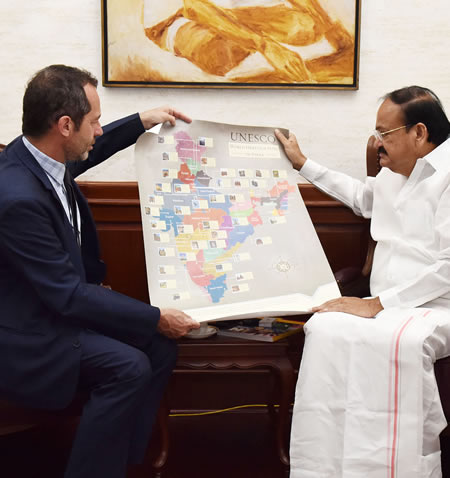
Photo: The Vice President, M. Venkaiah Naidu, receiving the UNESCO’s Map of World Heritage Sites of India from the Director, UNESCO New Delhi, Mr. Eric Falt, in New Delhi on 10 July 2019.

Photo: The Vice President, M. Venkaiah Naidu, receiving UNESCO’s State of the Education Report for India 2019 from the Director, UNESCO New Delhi, Mr. Eric Falt, in New Delhi on 10 July 2019.
New Delhi, 10 July 2019 — A UNESCO delegation led by Mr. Eric Falt, Director, UNESCO, New Delhi, called on the Vice President of India, M. Venkaiah Naidu, here today, and presented State of the Education Report for India 2019.
Mr. Falt also presented a map of the UNESCO World Heritage Sites in India to the Vice President.
|GlobalGiants.Com|
हमारी आकरà¥à¤·à¤• और जीवंत धरोहरों को इस मानचितà¥à¤° में दरà¥à¤¶à¤¾à¤¯à¤¾ गया है। इन धरोहरों को चिनà¥à¤¹à¤¿à¤¤ कर, मानचितà¥à¤° के रूप में उनकी पà¥à¤°à¤¸à¥à¤¤à¥à¤¤à¤¿ के संदरà¥à¤ में, यूनेसà¥à¤•à¥‹ के पà¥à¤°à¤¯à¤¾à¤¸ सराहनीय हैं। @UNESCO #WorldHeritageSite
— VicePresidentOfIndia (@VPSecretariat) July 10, 2019







Edited & Posted by the Editor | 2:46 PM | View the original post
July 7, 2019
UNESCO and G7 Countries Raise the Alarm about Bullying, Join Forces against Violence in Education.
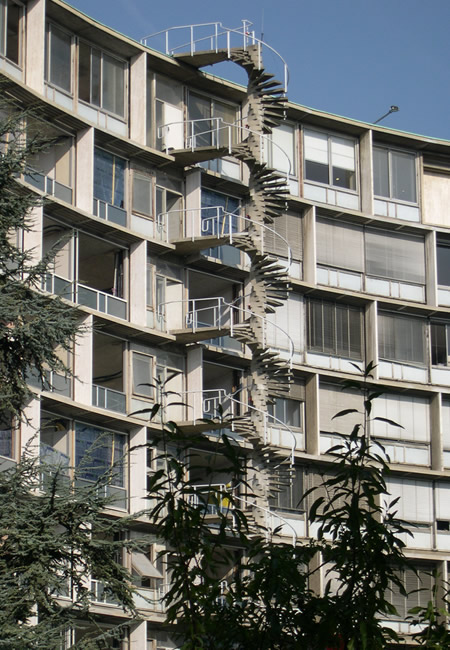
Photo: Concrete staircase, UNESCO building, Paris, France. Designed in 1958 by Marcel Breuer & Pier Luigi Nervi. Image Credit: David Crowley.
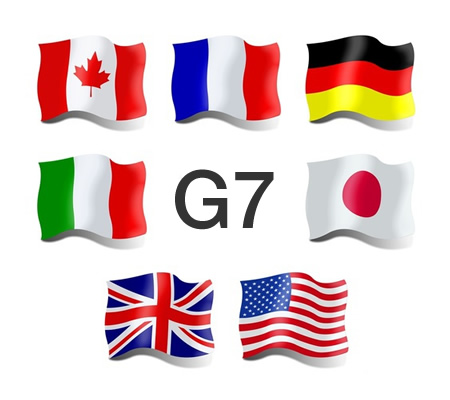
Paris, 04 July, 2019 — During their meeting in France, the Education Ministers of the G7 countries, with the participation of the Director-General of UNESCO, Audrey Azoulay, adopted a declaration to “unite against bullying in all of its forms, proclaim respect as a fundamental principle for all, and help ensure that our schools are safe and welcoming for all students.”
G7, or the Group of Seven, is a group consisting of Canada, France, Germany, Italy, Japan, the United Kingdom, and the United States. These countries, with the seven largest IMF-described advanced economies in the world, represent 58% of the global net wealth.
“Bullying is unacceptable and is getting even worse. UNESCO is committed to combat this educational scourge, which costs lives, ruins childhoods, and jeopardizes the future. We have big data and practical guidelines in place. We now must intensify efforts with all Member States, including G7 countries, to end this plague,” said the Director-General of UNESCO during the ministerial meeting.
As the United Nations’ lead agency for education, UNESCO works to measure and assess the prevalence and many forms of bullying and its impact. UNESCO built a global indicator to compare situation among countries and is committed to helping strengthen legislation, train, and support teachers in the fight against school violence and bullying.
UNESCO welcomed the G7 declaration and called on all countries to intensify efforts against bullying and violence in schools. Bullying takes place in all states and affects many children and young people. According to the recent UNESCO report, “Behind the Numbers: Ending School Violence and Bullying,” almost one in three students worldwide (32%) has been bullied by their peers at school at least once in the last month. With the growing presence of online social networking platforms, cyber-bullying has extended the scope of bullying. Bullying, whether psychological, physical or sexual, including online, is a severe issue and a global threat to quality education and self-confidence, UNESCO said.
According to UNESCO, several factors contribute to effective national responses, including political leadership, the collaboration between the education sector and other sectors, evidence-based approach, and training for teachers.
Meanwhile, UNESCO has joined the French proposal to organize an international conference in Paris on this issue. UNESCO will also propose to its Member States the adoption of an international anti-bullying day.
• In a related development in India, the University Grants Commission (UGC) has notified “Regulations on Curbing the Menace of Ragging in Higher Educational Institutions.” These regulations are mandatory for all higher educational institutions in the country.
UGC has written a letter to the Vice-Chancellors of all Universities. It has warned, “Any violation of UGC Regulations or failure to suitably punish the perpetrators of ragging, will attract punitive action under the UGC Act.”
Meanwhile, on 23 July 2019, UGC issued a Public Notice listing 23 “fake,” “self-styled” universities that are “functioning in various parts of the country in contravention of the UGC Act.”
|GlobalGiants.Com|

“Smite a scorner, and the simple will beware.”
— Proverbs of Solomon 19:25. King James Version.







Edited & Posted by the Editor | 9:53 AM | View the original post
July 6, 2019
UNESCO declares Jaipur City a World Heritage Site.
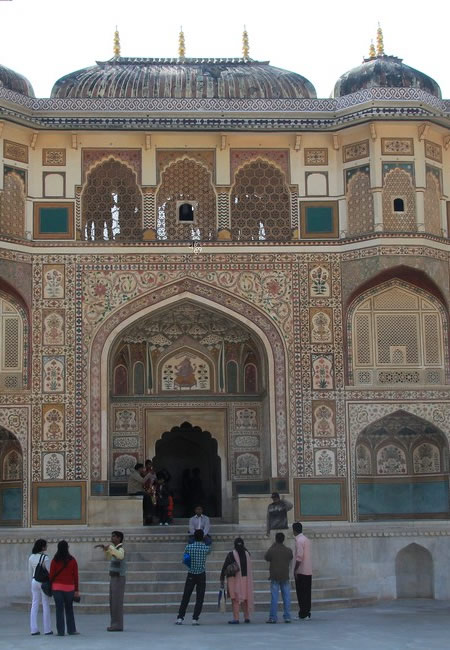
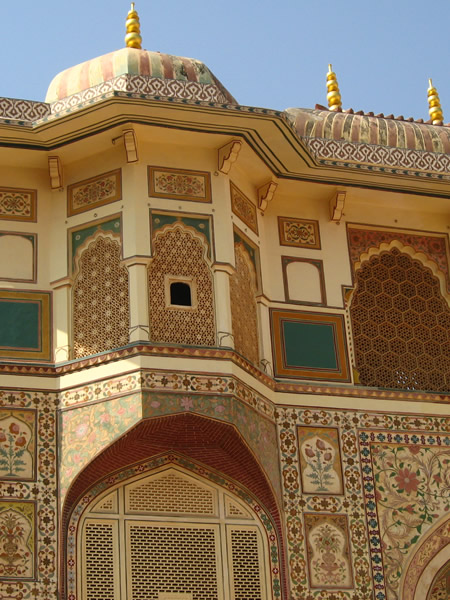
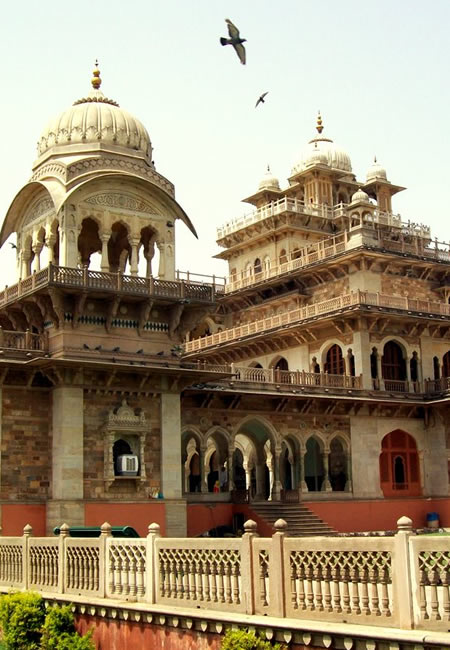
Photos: Jaipur City. Images Credit: Patrick Rasenberg, Louise Goggin, Subhabrata Majumdar.
New Delhi, July 06, 2019 — In yet another landmark achievement, India’s nomination, Jaipur City, Rajasthan, got inscribed today on the World Heritage List of UNESCO during the 43rd Session of the World Heritage Committee held at Baku, Azerbaijan. Jaipur City was successfully nominated complying with the various UNESCO guidelines of 2017. With the inscription of Jaipur City, India has 38 world heritage sites, that include 30 Cultural properties, 7 Natural properties, and one mixed.
India’s nomination was initially recommended by the ICOMOS (advisory body of World Heritage (WH) Centre for cultural sites) as Deferral, but the 21 nation World Heritage Committee debated it and after discussion decided to inscribe it on the World Heritage list.
India’s Minister for Culture, Prahlad Singh Patel, expressed his happiness for the inclusion of Pink City Jaipur in world heritage list and congratulated people of Jaipur for this prestigious tag. The Minister thanked the global community for recognizing the historical and cultural importance of Jaipur.
Here are excerpts from the statement presented by India before the World Heritage Committee, outlining Jaipur’s Outstanding Universal Value (OUV):
“The City of Jaipur is an exceptional urban example in indigenous city planning and construction in South Asia. Unlike other medieval cities of the region, Jaipur was deliberately planned as a new city on the plains open for trade as opposed to hilly terrain and military cities of past, though its planning still ensured a response to the surrounding hilltops in all directions. The site selected within the valley that lay to the south of Amber hills was comparatively flat and unmarred by any previous construction. Besides exemplary planning, its iconic monuments such as the Govind Dev temple, City Palace, Jantar Mantar, and Hawa Mahal excel in artistic and architectural craftsmanship of the period. Jaipur is an expression of the astronomical skills, living traditions, unique urban form, and exemplary foresighted city planning of the 18th-century city from India. Jaipur is an exemplary development in town planning and architecture that demonstrates amalgamation and important interchange of several ideas over the late medieval period.”
The countries that supported India’s nomination are as follows:
Brazil, Bahrain, Cuba, Indonesia, Azerbaijan, Kuwait, Kyrgyzstan, Zimbabwe, China, Guatemala, Uganda, Tunisia, Burkina Faso, Bosnia and Herzegovina, Angola, St. Kitts and Nevis. Australia and Norway initially proposed referral, but after the debate, they agreed for Inscription of Jaipur city.
With this, India now has 38 World Heritage Sites, that include 30 Cultural properties, 7 Natural properties, and one mixed site.
Source: Ministry of Culture, Government of India
|GlobalGiants.Com|
Jaipur is a city associated with culture and valour. Elegant and energetic, Jaipur’s hospitality draws people from all over.
— Narendra Modi (@narendramodi) July 6, 2019
Glad that this city has been inscribed as a World Heritage Site by @UNESCO. https://t.co/1PIX4YjAC4
Congratulations #India!
— UNESCO New Delhi (@UNESCO_NDL) July 6, 2019
Just inscribed as @UNESCO #WorldHeritage Site: Jaipur City in Rajasthan, #India 🇮🇳. Bravo 👠#Watch the congratulatory message from @UNESCO_NDL Director Eric Falt.@UNinIndia @IndiaatUNESCO @PMOIndia @UNESCO @UNDP_India @my_rajasthan pic.twitter.com/gSsdHibRKq







Edited & Posted by the Editor | 10:00 AM | View the original post
July 2, 2019
Human Resource Development Minister of India, Dr. Ramesh Pokhriyal ‘Nishank’, felicitates heads of IIT Bombay, IIT Delhi and IISc Bangalore for getting included in the Top 200 of QS World University Rankings - 2020.

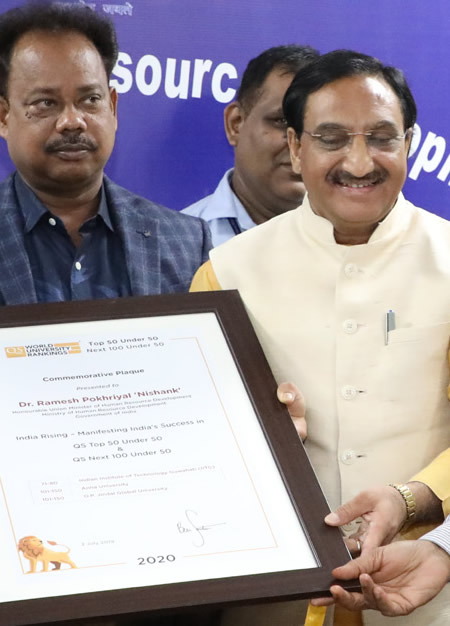
Photo The Minister for Human Resource Development, Dr. Ramesh Pokhriyal ‘Nishank’, congratulated the heads of the Indian Institute of Technology, Bombay, the Indian Institute of Technology, Delhi and the Indian Institute of Science, Bangalore for securing ranks in top 200 of QS World University Rankings- 2020, in New Delhi on July 02, 2019.
New Delhi, 02 JUL 2019 — Union Human Resource Development Minister, Dr Ramesh Pokhriyal ‘Nishank’, felicitated the heads of Indian Institute of Technology, Bombay, Indian Institute of Technology, Delhi and Indian Institute of Science, Bangalore for securing ranks in top 200 of QS World University Rankings- 2020 in New Delhi today.
The Minister said that the progress of a nation depends upon the status of education in that country. He said that all the higher educational institutions should focus on quality, research, and innovation. The training should find solutions to the problems of society at all levels and contribute to the overall development of the nation.
The Minister said that the research and innovation is the foundation for making developed, prosperous New India. He added that the Ministry is taking various steps to promote research and innovation and prepare young scientists in the country.
Earlier, the senior officials of the Ministry had a brainstorming session with the representatives of QS World University Rankings on improving the ranking of the Indian Educational Institutions at the global level.
Mr. R. Subrahmanyam, Secretary, Department of Higher Education, MHRD and Mr. Ashwin Fernandes, Regional Director for QS Intelligence Unit in Middle East, North Africa & South Asia, took part in the discussion.
|GlobalGiants.Com|
आज अपने मंतà¥à¤°à¤¾à¤²à¤¯ में आयोजित à¤à¤• कारà¥à¤¯à¤•à¥à¤°à¤® में आईआईटी मà¥à¤‚बई, दिलà¥à¤²à¥€ और à¤à¤¾à¤°à¤¤à¥€à¤¯ विजà¥à¤žà¤¾à¤¨ संसà¥à¤¥à¤¾à¤¨ बैंगलोर को कà¥à¤¯à¥‚ à¤à¤¸ रैंकिंग में विशà¥à¤µ की 200 शीरà¥à¤· संसà¥à¤¥à¤¾à¤“ं में शामिल होने पर बधाई दी ।
— Dr Ramesh Pokhriyal Nishank (@DrRPNishank) July 2, 2019
किसी à¤à¥€ राषà¥à¤Ÿà¥à¤° की सफलता का मारà¥à¤— उसके शैकà¥à¤·à¤¿à¤• संसà¥à¤¥à¤¾à¤“ं से होकर गà¥à¤œà¤°à¤¤à¤¾ है , pic.twitter.com/V1VwzQgI7B







Edited & Posted by the Editor | 2:10 PM | View the original post


